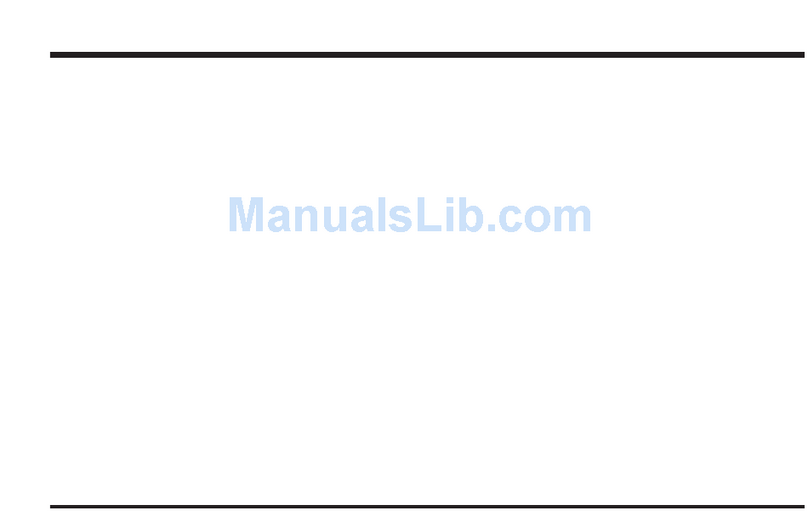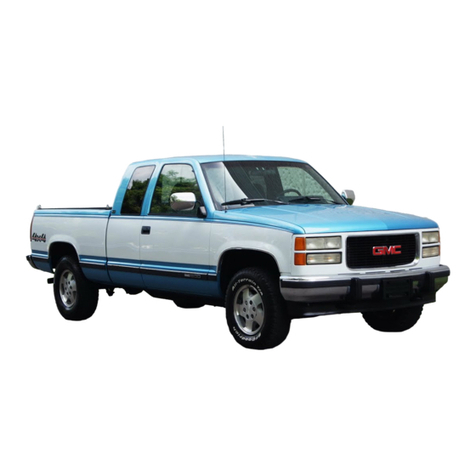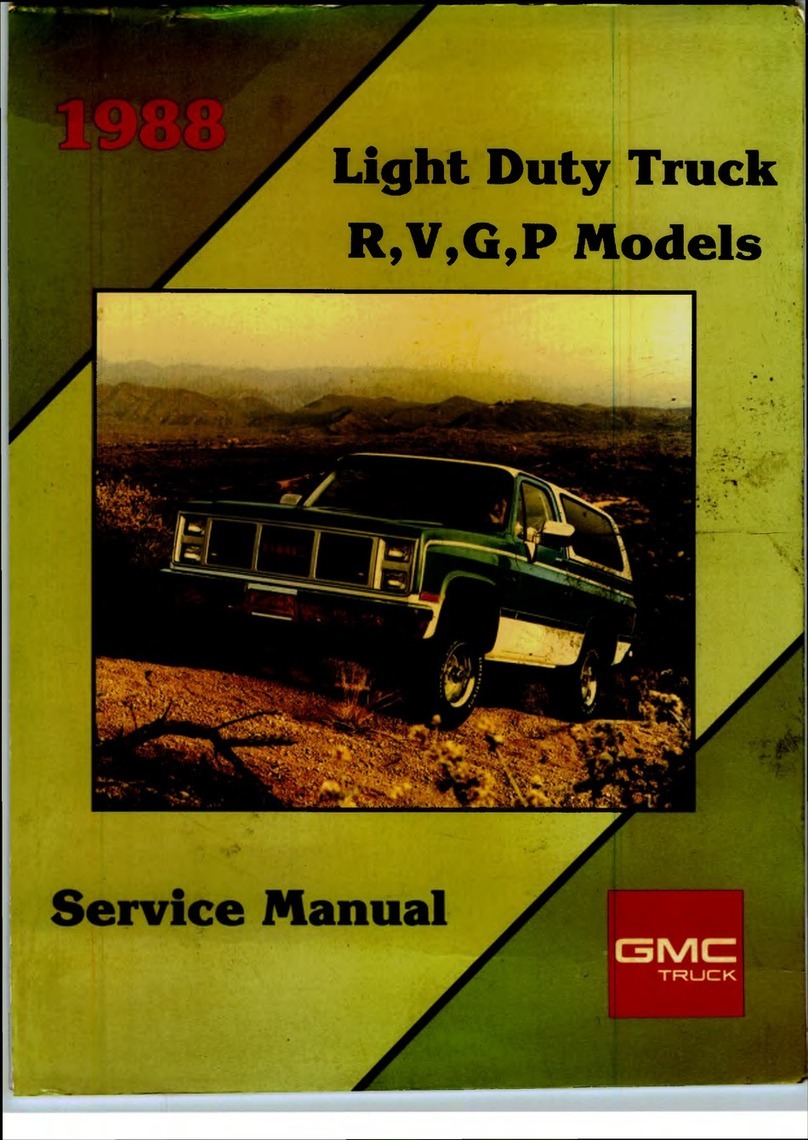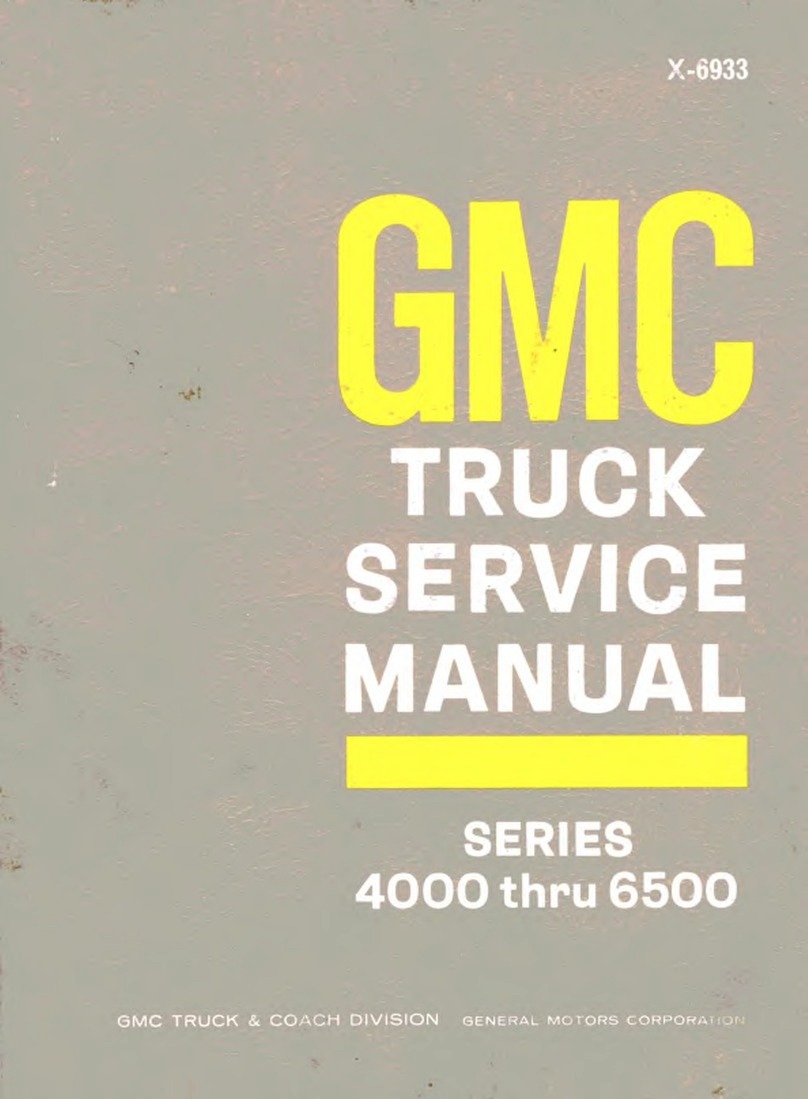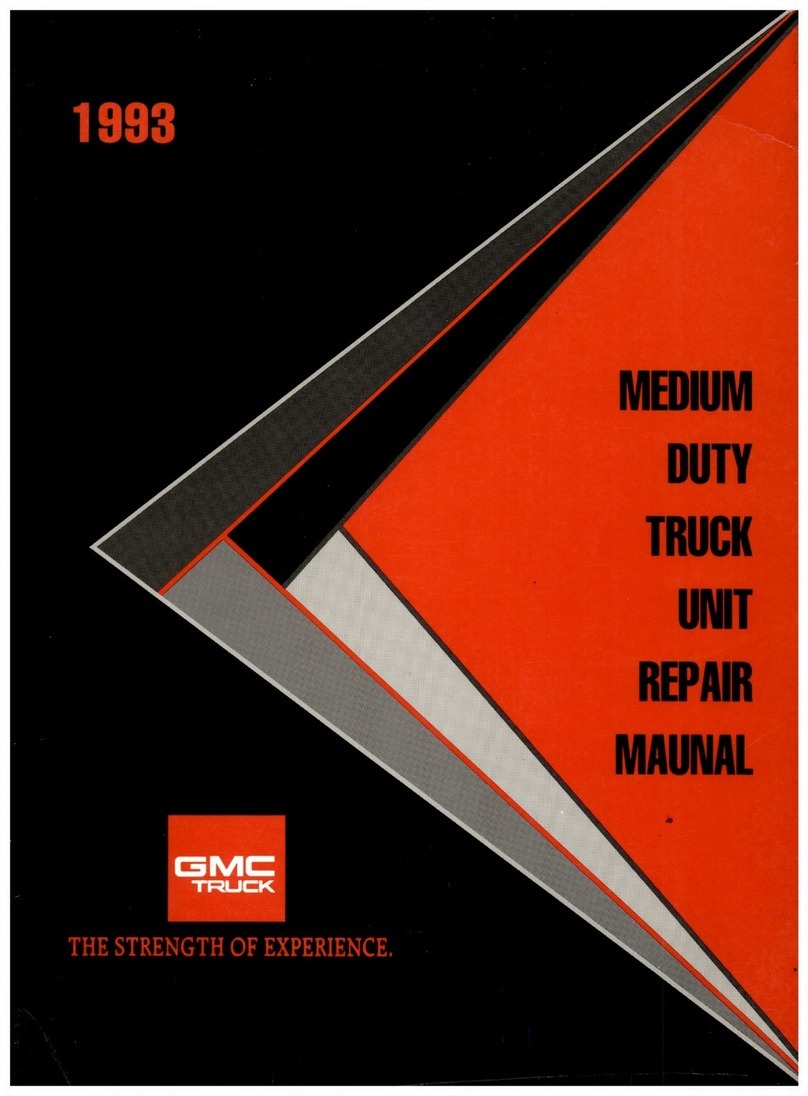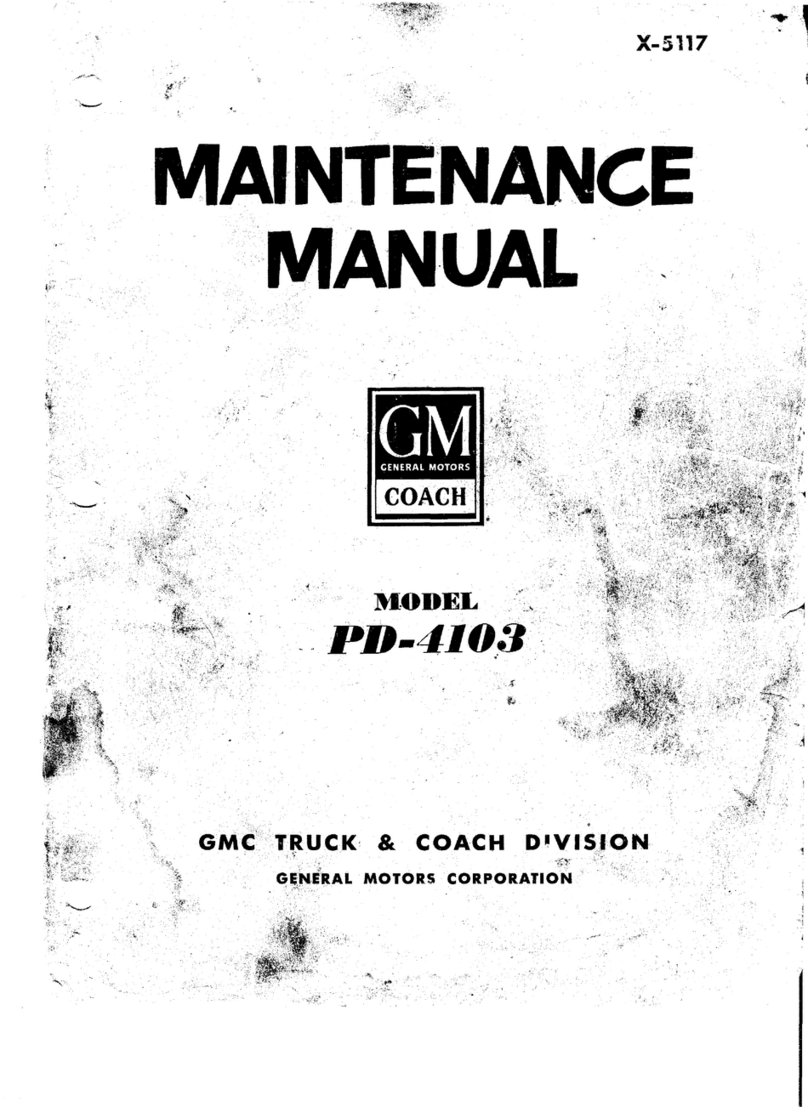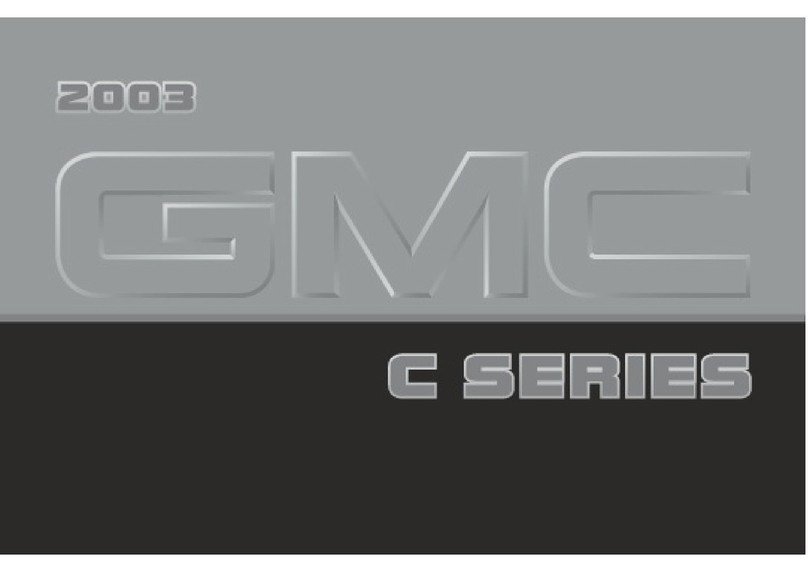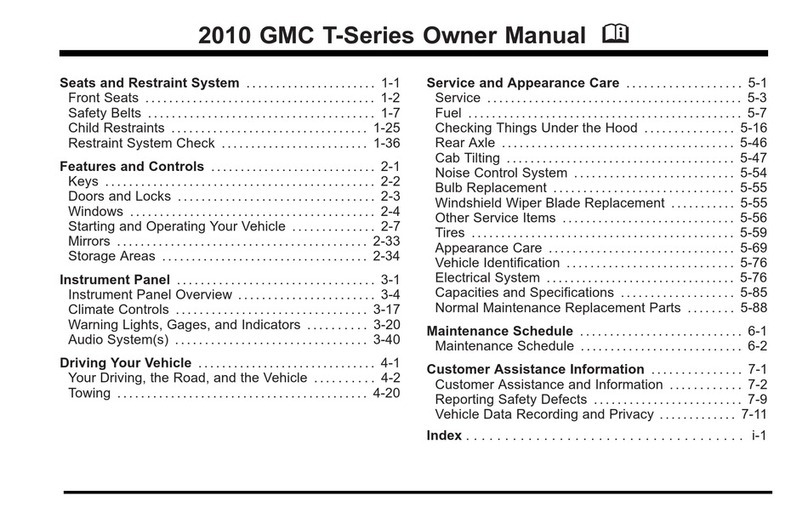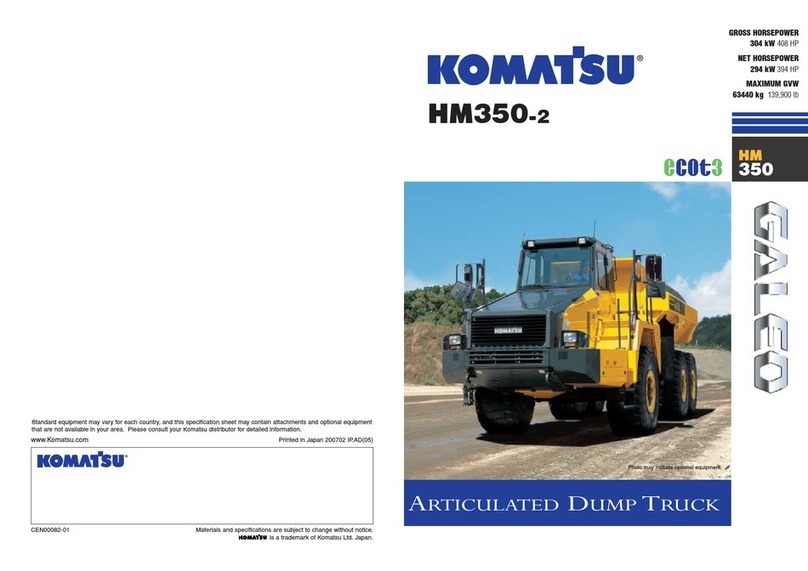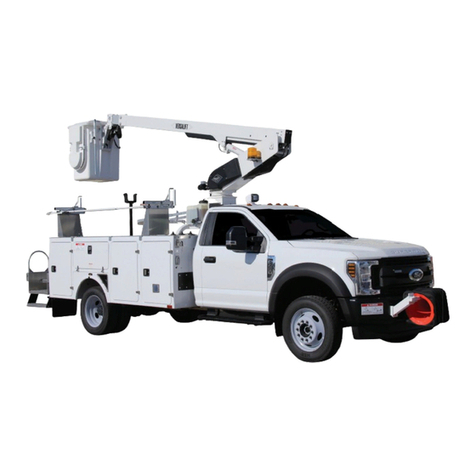
GENERAL INFORMATION OA-3
SERVICE PARTS IDENTIFICATION STICKER
The Service Parts Identification Stic er (Fig. OA-6) is
provided on all Truc models. On C and K models, the
identification stic er be located on the inside of the glove box
door or on G model, the stic er will be located on an inner
hood panel surface. On P models, the stic er is located on a
inner body panel.
The plate lists the vehicle identification number,
wheelbase, and all Production options or Special Equipment
on the vehicle when it was shipped from the factory
including paint information. ALWAYS REFER TO THIS
INFORMATION WHEN ORDERING PARTS.
VEHICLE LOADING
Vehicle loading must be controlled so weights do not
exceed the numbers shown on the Vehicle Identification
Number and/or Rating Plate for the vehicle.
A typical example of a truc in a loaded condition is
shown in Figure OA-7. Note that the axle or GVW capabili
ties are not exceeded.
ENGINE CODE NUMBER
The engine code number indicates producing
plant, month and day of manufacture, and transmission
type. A typical engine number would be F1210TTBB, which
would brea down thus:
F - Producing Plant (F-Flint, T-Tonawanda)
12 - Month of Manufacture (December)
10 - Day of Manufacture (tenth)
T - Truc
TBB - Transmission and engine type
UNIT AND SERIAL NUMBER LOCATIONS
For the convenience of service technicians and engi
neers when writing up certain business papers such as
Warranty Reports, Product Information Reports, or report
ing product failures in any way, the location of the various
unit numbers have been indicated. These unit numbers and
their prefix or suffix are necessary on these papers for
various reasons - such as accounting, follow-up on produc
tion, etc.
The prefixes on certain units identify the plant in which
the unit was manufactured and thereby permits proper
follow-up of the plant involved to get corrections made when
necessary.
Always include the prefix in the number.
SERVICE PARTS IDENTIFICATION
V.I.N | ■ mu-- H i
V 1 N - VlMlCli IDENTIFICATION NUMBER
NOTE I THE SPECIAL EQUIPMENT LIS
PARTS BE SURE TO SPECIF'
TED BELOW MAS BEEN INSTALLED ON
IDENTIFIC A TION OF REPLACEMENT
THE APPLICABLE OPTION NUMBERS
DE SCR IPTIO N OPTION D E SCR IPTIO N
■■
Axles
Chevrolet Built
• On 10 Series, the Code is stamped on Top of Right
Rear Axle Tube.
• On 20-30 Series, the Code is stamped on Top of the
Right Rear Axle Tube.
Dana Built
• On Front Axles, code is stamped on Top Rear of Left
Axle Tube.
• On Rear Axles, code is stamped on Rear Surface of
Right Axle Tube.
Transmissions (Fig. OA-6)
• On 3-Speed Transmissions (except Tremec), the Unit
Number is located on Lower Left Side of Case Just
Below Cover.
• On Tremec Transmissions, Unit Number is located on
Upper Left Attachment Case (Top Side).
• On Muncie 4-Speeds, Unit Number is located on Rear
Face of Case below Retainer.
• On New Process 205 model 4-wheel drive transfer case,
a build date is on tag attached to front face of transfer
case.
• On Automatic 350 Transmission, Unit Number is
Located on Right Rear Vertical Surface of Oil Pan.
• On the Automatic 400 Transmission, Serial Number is
Located on the Light Blue Plate on the Right Side of
the Transmission.
• On the Automatic 700R4 Transmission, the
Unit Number is stamped on the cover pan rail
on the Right Side of the Transmission.
I PORTANT: RETAIN THIS PLATE AS A PER ANENT RECORD
L O A D E D -M A X IM U M G VW R: 4900-LBS.
FRONT GAWR: 2944 LBS. REAR GAWR: 2944 IBS.
Front urb
Front argo &
Pass. Load
2219 lbs.
284 lbs.
*Rear urb
Rear argo &
Pass. Load
2503 lbs.
1003 lbs.
1394 lbs.
2397 lbs.
TOTAL WEIGHT AT GROUND: 4900 lbs.
* urb weight equals the weight of the vehicle without driver,
passenger or cargo, but including fuel and coolant.
Fig. 0A-4-Service Parts Identification Plate Fig. 0A-5--Typical Vehicle Loading ondition
